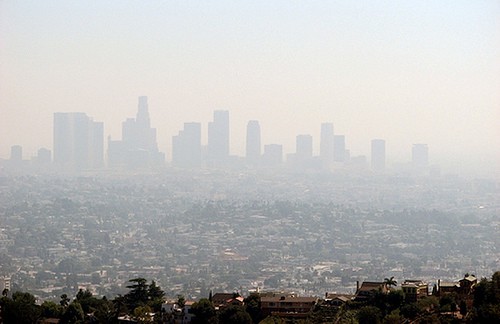Smog’s Health a type of air pollution characterized by a mixture of smoke and fog, is a major environmental and public health concern. It is primarily composed of ground-level ozone, particulate matter (PM), nitrogen oxides (NOx), and volatile organic compounds (VOCs). These pollutants are released into the atmosphere through various sources, including vehicle emissions, industrial processes, and burning of fossil fuels. Smog poses significant risks to human health, affecting respiratory, cardiovascular, and overall well-being. This article explores the health effects of smog, its causes, and measures to mitigate its impact.
Understanding Smog
Smog is formed when pollutants from vehicles, factories, and other sources react with sunlight. There are two main types of smog: photochemical smog and sulfurous smog.
- Photochemical Smog: This type of smog, also known as “summer smog,” forms when sunlight reacts with nitrogen oxides and volatile organic compounds in the atmosphere. It is most prevalent in urban areas with high levels of vehicle emissions. Ground-level ozone is a key component of photochemical smog.
- Sulfurous Smog: Also known as “winter smog” or “London smog,” sulfurous smog forms when sulfur dioxide from burning coal and other fossil fuels combines with particulate matter and fog. It is more common in colder climates and industrial regions.
Health Effects of Smog
Exposure to smog can have immediate and long-term health effects, particularly for vulnerable populations such as children, the elderly, and individuals with pre-existing health conditions. The following sections outline the various health risks associated with smog exposure.
Respiratory Health
- Asthma and Allergies: Smog is a known trigger for asthma attacks and can exacerbate symptoms in individuals with respiratory allergies. Ground-level ozone and particulate matter can irritate the airways, leading to increased inflammation and difficulty breathing. Asthma sufferers may experience more frequent and severe attacks during high smog periods.
- Chronic Obstructive Pulmonary Disease (COPD): COPD, which includes chronic bronchitis and emphysema, is a progressive lung disease characterized by airflow obstruction and breathing difficulties. Smog exposure can worsen COPD symptoms, leading to increased hospital admissions and decreased lung function.
- Respiratory Infections: Smog can weaken the respiratory system’s defenses, making individuals more susceptible to respiratory infections such as bronchitis and pneumonia. Children and the elderly are particularly at risk of developing these infections due to their weaker immune systems.
- Reduced Lung Function: Long-term exposure to smog can impair lung development in children and reduce lung function in adults. This can lead to chronic respiratory issues and decreased overall respiratory health.
Cardiovascular Health
- Heart Attacks and Strokes: Studies have shown a correlation between smog exposure and an increased risk of heart attacks and strokes. Particulate matter and other pollutants can enter the bloodstream, leading to inflammation and the formation of blood clots. This can result in cardiovascular events, especially in individuals with pre-existing heart conditions.
- Hypertension: Exposure to smog can contribute to high blood pressure (hypertension). The pollutants in smog can cause blood vessels to constrict, leading to increased blood pressure and strain on the cardiovascular system.
- Atherosclerosis: Smog can accelerate the development of atherosclerosis, a condition characterized by the buildup of fatty deposits in the arteries. This can restrict blood flow and increase the risk of heart attacks and other cardiovascular diseases.
Other Health Effects
- Cancer: Long-term exposure to certain pollutants in smog, such as benzene and formaldehyde, has been linked to an increased risk of cancer. Particulate matter, particularly fine particles (PM2.5), can penetrate deep into the lungs and enter the bloodstream, contributing to the development of lung cancer and other cancers.
- Premature Birth and Low Birth Weight: Pregnant women exposed to high levels of smog are at risk of delivering premature or low birth weight infants. These conditions can lead to developmental issues and increased health risks for newborns.
- Cognitive Decline: Emerging research suggests a link between smog exposure and cognitive decline. Air pollution has been associated with an increased risk of neurodegenerative diseases such as Alzheimer’s and Parkinson’s disease. The pollutants in smog can cause inflammation and oxidative stress in the brain, leading to cognitive impairment.
- Eye and Skin Irritation: Smog can cause eye irritation, redness, and discomfort. The pollutants in smog can also lead to skin issues such as dryness, irritation, and exacerbation of existing skin conditions like eczema and acne.
Mitigating the Impact of Smog
While it is challenging to completely eliminate exposure to smog, there are several measures individuals and communities can take to reduce its impact on health:
- Stay Informed: Stay updated on air quality levels in your area by checking air quality indices (AQI) provided by local environmental agencies. Avoid outdoor activities during high smog periods, especially if you are in a vulnerable group.
- Reduce Outdoor Activity: Limit outdoor activities, especially strenuous exercise, during times of high smog. If you need to be outside, wear a mask designed to filter out pollutants and avoid busy roads and industrial areas.
- Improve Indoor Air Quality: Use air purifiers with HEPA filters to reduce indoor air pollution. Keep windows and doors closed during high smog periods and use air conditioning to maintain indoor air quality.
- Advocate for Cleaner Air: Support policies and initiatives aimed at reducing air pollution, such as stricter emission standards for vehicles and industries, promotion of public transportation, and development of green spaces. Community involvement can drive change and improve air quality for everyone.
- Adopt Sustainable Practices: Reduce your own contributions to air pollution by adopting sustainable practices such as using public transportation, carpooling, biking, or walking. Use energy-efficient appliances and reduce energy consumption at home.
- Plant Trees: Trees and green spaces can help improve air quality by absorbing pollutants and releasing oxygen. Support and participate in local tree-planting initiatives and advocate for the preservation of green spaces.
Conclusion
Smog’s Health poses significant health risks, affecting respiratory, cardiovascular, and overall well-being. Understanding the impact of smog on health and taking proactive measures to reduce exposure can help mitigate its harmful effects. By staying informed, adopting sustainable practices, and supporting policies aimed at reducing air pollution, we can work towards cleaner air and a healthier environment. Protect yourself and your community by prioritizing air quality and advocating for change.

